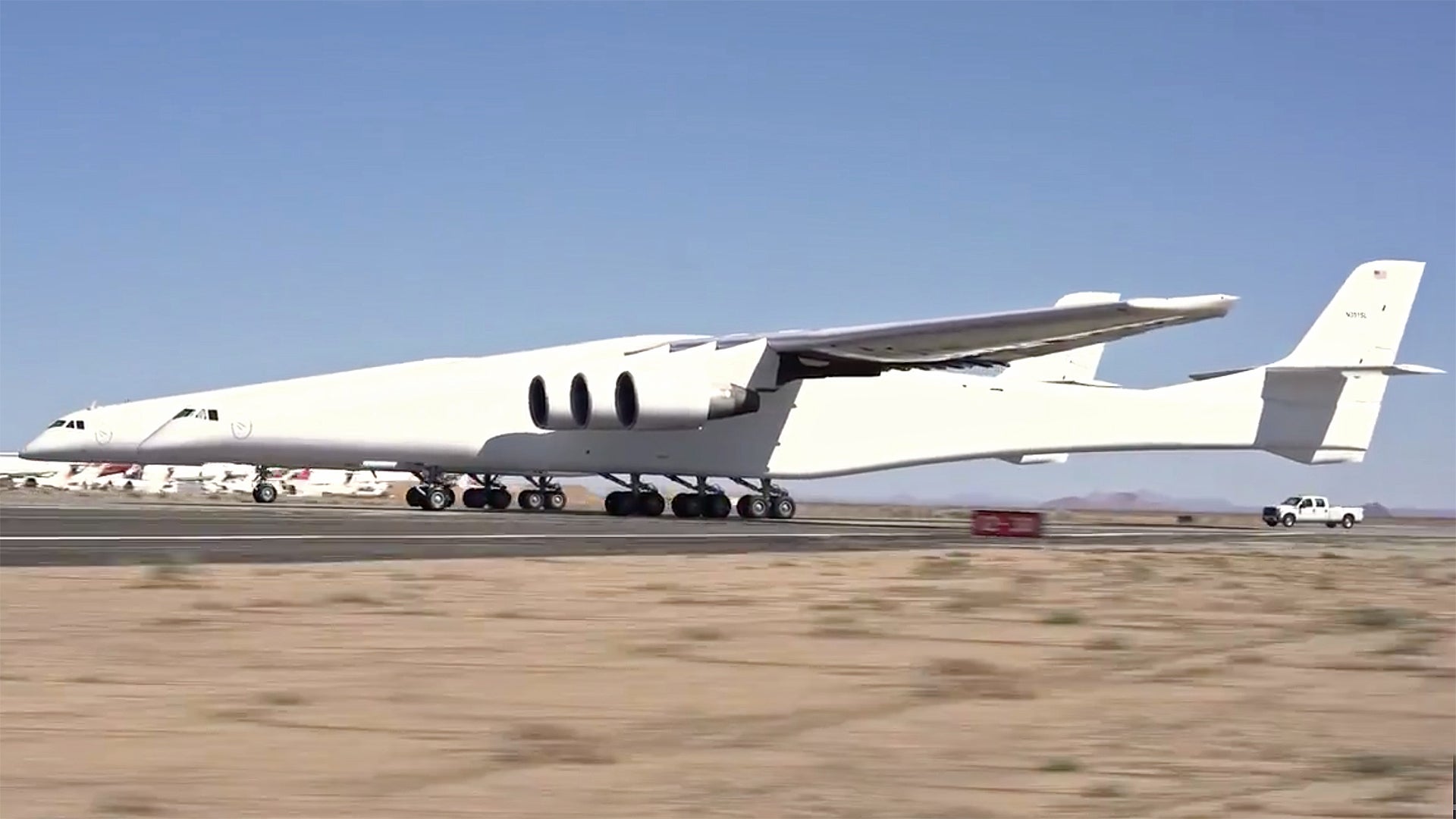The 385 foot wide, six engine Stratolaunch is creeping quickly towards its inaugural flight, literally. In recent days there have been sightings of monstrous space-launch mothership scooting around Mojave Air and Space Port. Now the project’s primary benefactor Paul Allen has posted some incredible footage of the aircraft undergoing high-speed ground-tests before its first flight.
Allen notes in his tweet that the gargantuan jet got up to a speed of 46 miles an hour, which is scooting along the ground pretty fast for an aircraft that will tip the scales at 1.3M pounds once it is fully loaded. The clip of the aircraft doing a run down the runway looks like something out of a science fiction movie or a computer generated vaporware concept. You can read all about Stratolaunch in our pervious piece on the system, its concept, and its history.
Business prospects for quickly and cheaply launching smaller satellites into orbit have looked even more positive in recent months as the Pentagon has become more focused on making its capabilities in space more resilient and flexible. The Defense Department is now actively planning for space to be the next major battlefield, an eventuality we at The War Zone have been warning about for a long time. General Goldfein, the USAF’s top officer, stated the following just last week:
“I believe we’re going to be fighting from space in a matter of years. And we are the service that must lead joint war fighting in this new contested domain. This is what the nation demands.”

The DoD’s plans include achieving short-notice (minutes and hours, not weeks and months) and economical access to space that could allow for the replacement of disabled or destroyed satellites with relative ease during a time of war. The hope is that this capability in itself would act as a deterrent against enemy anti-satellite operations. Making the whole concept more enticing is the trend towards miniaturization of satellite systems, allowing far smaller orbital objects to pack the same features of much larger legacy systems.
With this in mind, the Air Force’s 2019 budget lays out a $192.5M initiative over five years for a “small launch” space access program when the force will purchase and support commercial providers who are aiming to offer these services. USAF Secretary Heather Wilson says the objective of the program is to help incubate a “variety of launch capabilities in order to have assured access to space.”

The Pentagon is also working on everything from a space plane, to realizing cheaper rocket launches, to so called “ride sharing” programs with larger payloads, as well outside of this program. And there are surely others that remain cloaked in the classified realm as well. Maybe the biggest competitor, at least directly with Stratolaunch’s concept is Virgin Orbit which was established just last year. America’s potentially enemies are also working on similar concepts.
Stratolaunch has its eyes set on becoming operational and hopefully income generating by the end of the decade. By the looks of it that could very well happen—if things continue as planned. The aircraft is theoretically capable of launching a range of rockets 2,000 miles from its takeoff point, with payloads up to 13,500lbs being able to achieve low earth orbit and 4,500lbs for geo-stationary orbit.

But it seems the aircraft’s bread and butter work will be based around Orbital ATK’s Pegasus XL rocket which can put a 1,000lb payload into low earth orbit. The aircraft should be able to launch multiples of these rockets on a single sortie.
So beyond being an incredible machine and a new landmark in aviation, the charismatic flying behemoth could usher in a new era in space access that can have a huge impact not just on our lives but also on the Pentagon’s future war-fighting plans.

Contact the author: Tyler@thedrive.com
